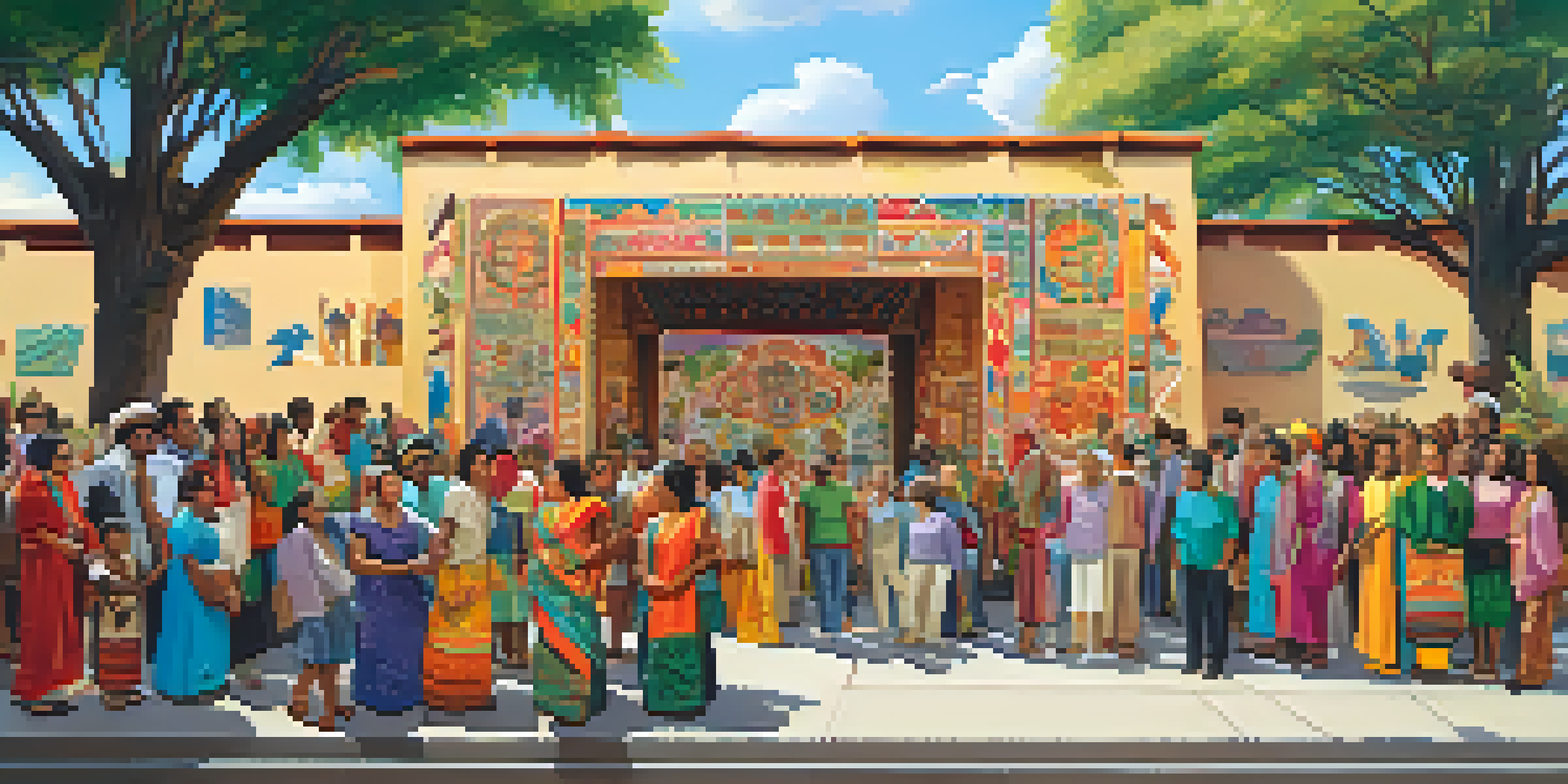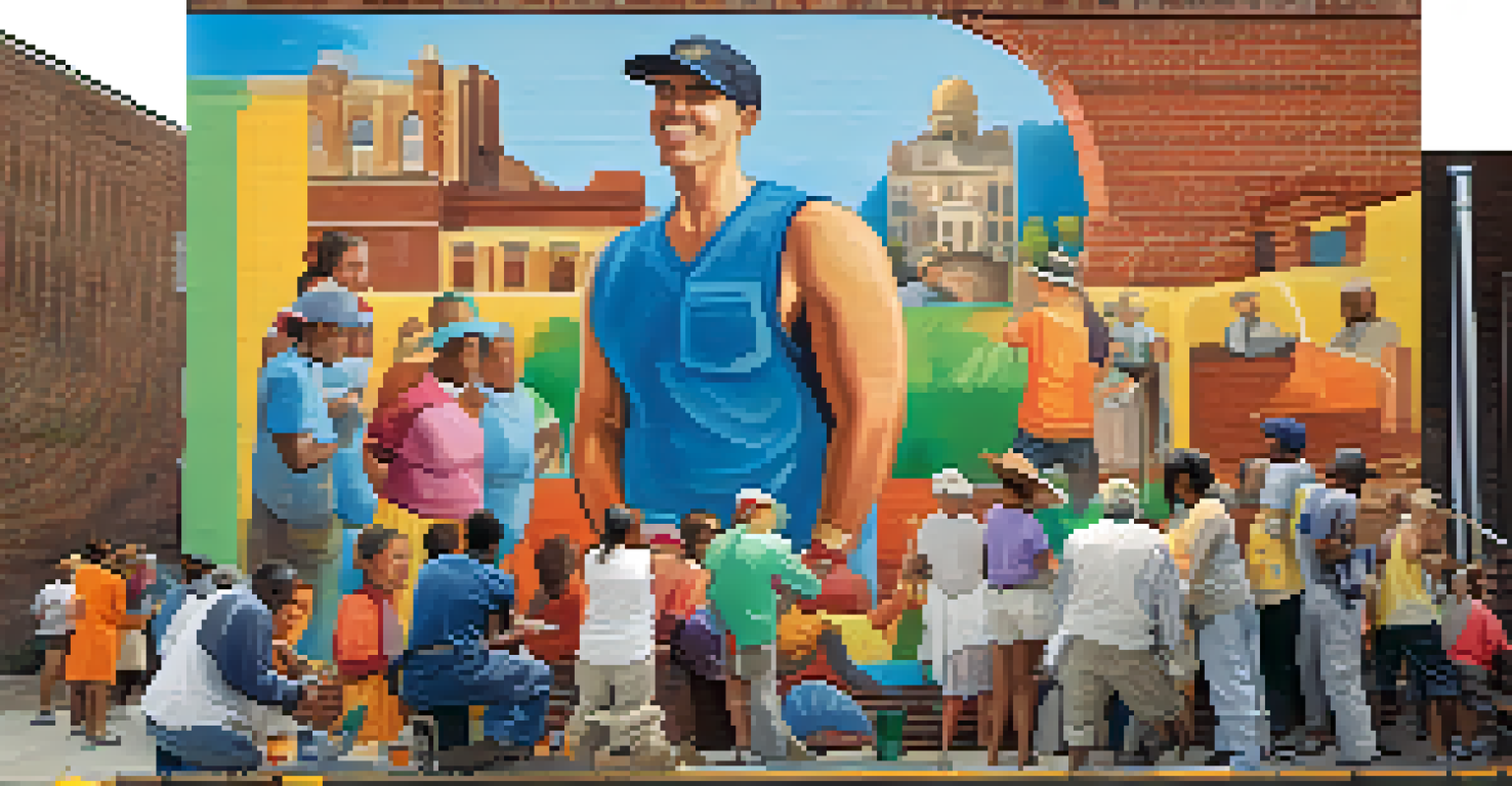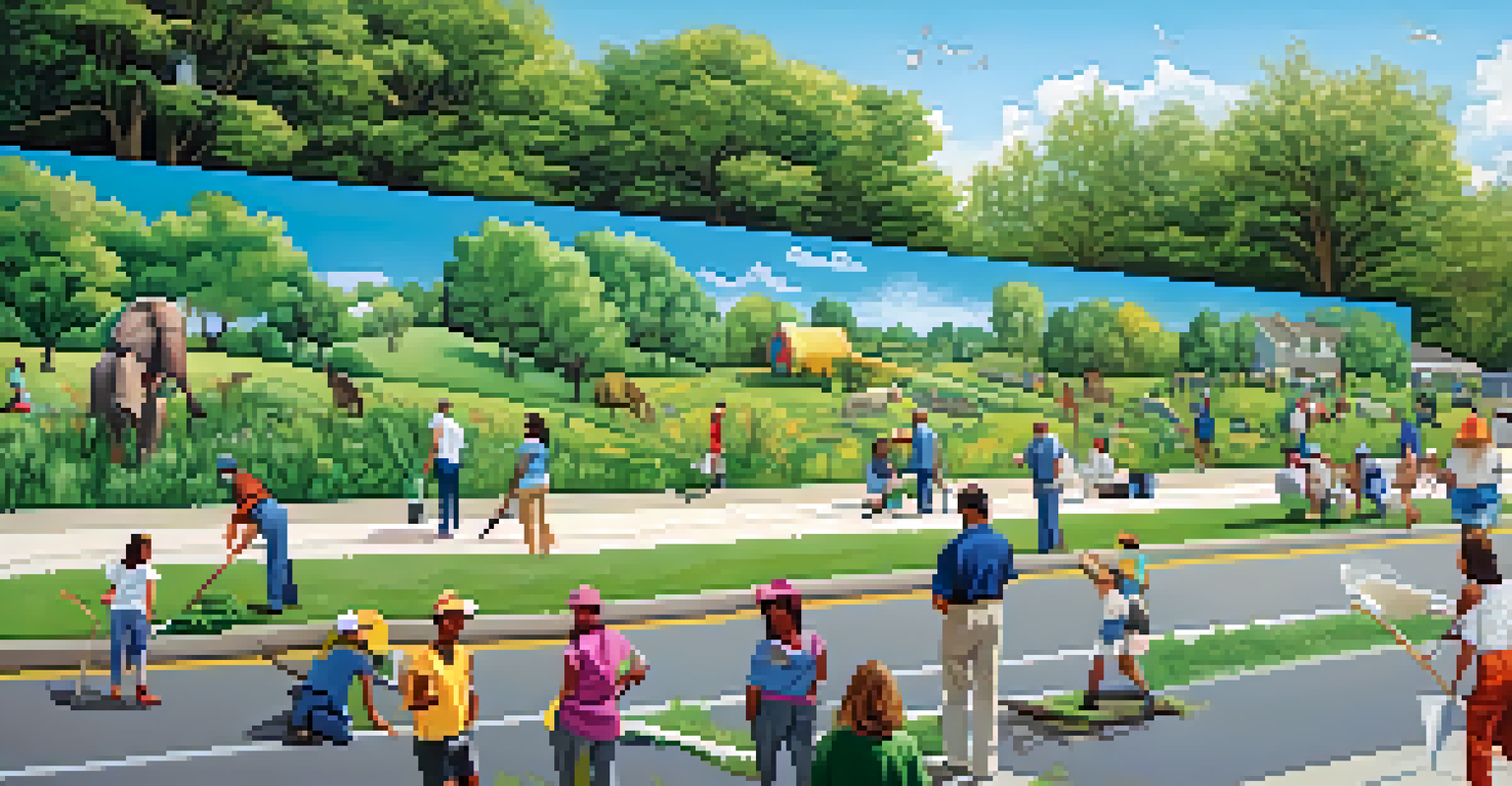The Impact of Murals on Community Identity and Pride

Murals as Symbols of Community Identity
Murals often serve as vibrant symbols of a community's identity, reflecting its unique culture, history, and values. When residents see these colorful artworks, they can instantly connect with their surroundings, creating a sense of belonging. For example, a mural depicting local history can evoke pride among residents, reminding them of their shared heritage and achievements.
Art is not what you see, but what you make others see.
These visual narratives often encapsulate the stories and experiences of the people who live there, fostering a collective memory. It’s not just about paint on a wall; it’s about storytelling that resonates with the community’s essence. Each mural can become a landmark, a point of reference that ties the past with the present.
Additionally, murals can represent marginalized voices, providing a platform for artists to express their perspectives. This inclusivity enhances community identity, as everyone can find something relatable in these public displays of art.
Promoting Pride Through Artistic Expression
Artistic expression in the form of murals can significantly boost community pride. When artists collaborate with local residents to create these works, it fosters a sense of ownership and collective pride. People take pride not just in the artwork but in the collaborative process that brought it to life.

Murals can transform bland, forgotten spaces into vibrant areas filled with energy and positivity. A once-neglected wall can become a canvas that uplifts spirits and draws attention, making community members feel proud of their environment. This transformation can also attract tourists, further enhancing local pride.
Murals Reflect Community Identity
Murals serve as vibrant symbols of a community's unique culture, history, and values, fostering a sense of belonging among residents.
Moreover, when community members see their stories celebrated through murals, it validates their experiences and fosters a sense of pride in their identity. This validation can lead to increased engagement in community activities, as residents feel more connected to their surroundings.
Fostering Connection Among Residents
Murals can act as social glue, fostering connections among residents. When people gather to admire a mural, it creates opportunities for conversations, sparking interactions that might not occur otherwise. This shared experience can lead to stronger relationships within the community.
Public art is the way we show our community who we are and what we value.
Local events, such as mural unveilings or painting parties, can further enhance these connections. They provide platforms for residents to engage with one another, collaborate on projects, and celebrate their local culture. These gatherings can be a catalyst for community bonding and collaboration.
As residents come together to discuss the mural's meaning or share their interpretations, a sense of camaraderie develops. This shared dialogue helps to strengthen community ties, making people feel more invested in their neighborhood.
Murals as Tools for Social Change
Murals can be powerful tools for social change, addressing important issues within the community. Artists often use their work to comment on social justice, environmental concerns, or cultural identity, sparking conversations that matter. These artworks can challenge the status quo and inspire action among community members.
By highlighting social issues through murals, artists raise awareness and encourage residents to engage with these topics. This can lead to community-driven initiatives aimed at addressing the very issues depicted in the art. For instance, a mural focusing on environmental sustainability might inspire local clean-up efforts.
Art Boosts Community Pride
Collaborative mural projects enhance community pride by transforming neglected spaces into vibrant areas that celebrate local stories and experiences.
Moreover, murals can serve as a visual reminder of the community's aspirations for change. They can inspire hope, resilience, and a sense of agency, motivating residents to work together to create a better future.
Encouraging Local Economic Development
Murals can positively impact local economies by attracting tourists and promoting local businesses. A vibrant mural can draw visitors who want to experience the art, leading them to explore nearby shops, cafes, and galleries. This influx of visitors can boost sales for local businesses.
Community members might also engage in mural-related activities, such as guided tours or workshops, creating additional revenue streams. These activities can highlight the artistic talent within the community while generating income and fostering a culture of creativity.
Furthermore, murals can enhance property values in the area. When neighborhoods invest in public art, they often see an increase in desirability, making it an appealing place to live, work, and visit. This ripple effect can benefit everyone in the community.
Strengthening Cultural Heritage and Preservation
Murals often pay homage to a community's cultural heritage, preserving stories and traditions for future generations. By integrating elements of local folklore, history, or cultural practices into their designs, artists help keep these narratives alive. This preservation fosters a sense of pride among residents and connects them to their roots.
Celebrating cultural heritage through murals can also educate newcomers and visitors about the community's history. These artworks can serve as visual lessons, inviting people to learn more about the traditions and stories that shape the neighborhood's identity.
Murals Drive Social Change
By addressing important social issues, murals can inspire community engagement and drive initiatives aimed at creating positive change.
As communities invest in preserving their cultural narratives through murals, they cultivate an appreciation for diversity. This appreciation can lead to a more inclusive atmosphere where various cultural expressions are celebrated and respected.
The Future of Murals in Community Development
Looking ahead, murals will continue to play a vital role in community development. As urban areas evolve, the integration of public art will remain essential in shaping spaces that reflect the community's identity. The collaboration between artists and residents will likely grow stronger, leading to even more meaningful projects.
Technology and social media are also influencing the future of murals. Artists can now share their work with a global audience, inspiring others and attracting attention to local movements. This interconnectedness can foster a sense of community on a larger scale, as people from different places unite around shared values.

Ultimately, the future of murals will hinge on their ability to adapt and resonate with the evolving community dynamics. As communities continue to embrace art as a form of expression, murals will remain a powerful tool for identity, pride, and connection.